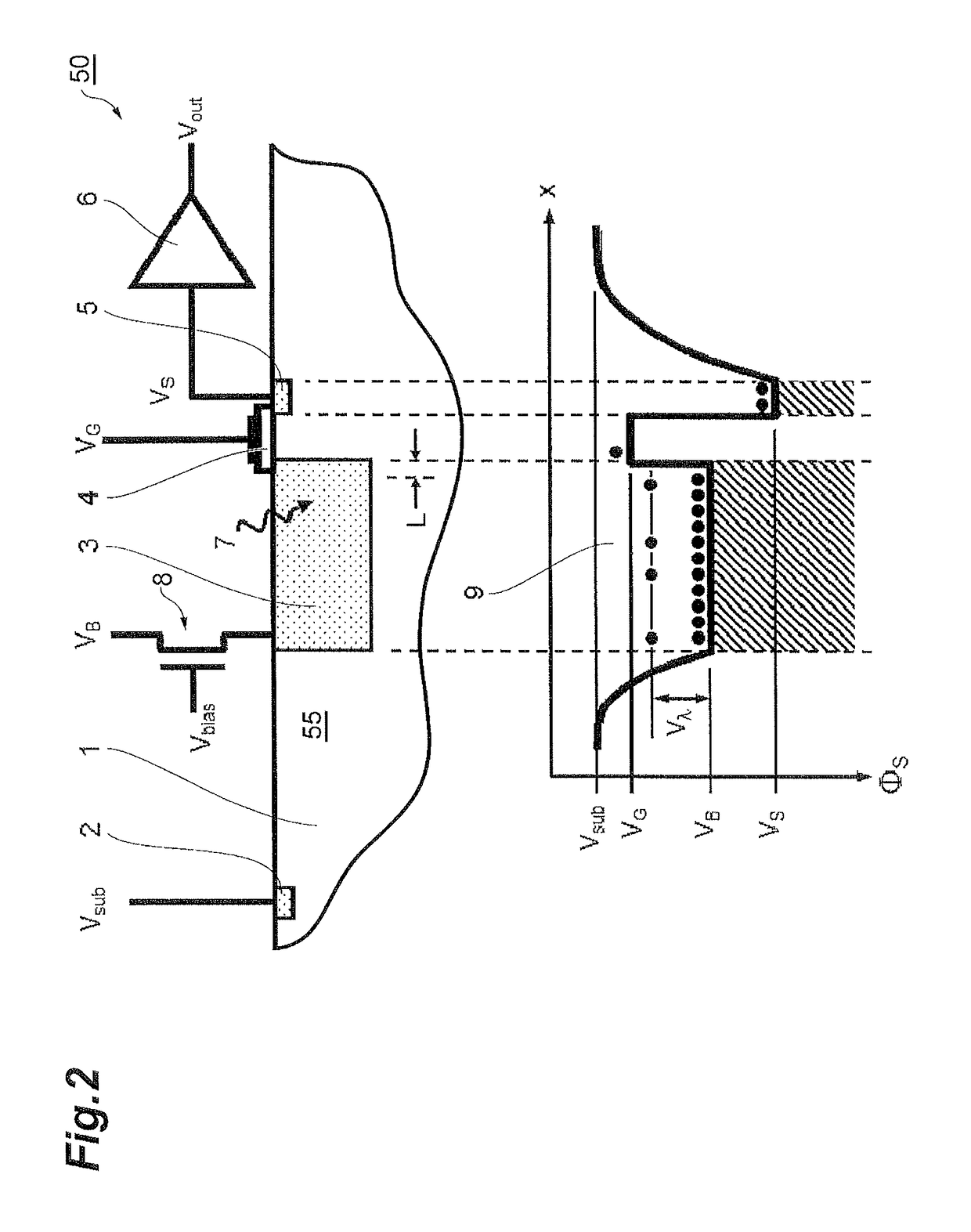Semiconductor photosensor for infrared radiation
a technology of infrared radiation and semiconductors, applied in the direction of photometry using electric radiation detectors, radiation control devices, solid-state devices, etc., can solve the problems of limited number of photosensing elements, limited sensitivity of microbolometers, and inability to come close to single-photon sensitivity
- Summary
- Abstract
- Description
- Claims
- Application Information
AI Technical Summary
Benefits of technology
Problems solved by technology
Method used
Image
Examples
Embodiment Construction
[0032]It is a principle object of the invention to provide a photosensor for the highly sensitive detection of infrared radiation in the wide spectral range from 1 to 1000 micrometers.
[0033]A further object of the invention is to provide an infrared photosensor that can be fabricated with industry-standard semiconductor processes such as the widely available silicon-based CMOS processes.
[0034]Another object of the invention is to provide an infrared photosensor whose cutoff wavelength can be chosen fast and adaptively with a voltage.
[0035]Yet another object of the invention is to provide an infrared photosensor device with such a small footprint that one- and two-dimensional infrared image sensors can be created using industry-standard semiconductor processes, resulting for example in an infrared image sensor with at least one Megapixels per square centimeter.
[0036]A final object of the invention is to provide a photosensor device that can distinguish between photocurrents generated...
PUM
 Login to View More
Login to View More Abstract
Description
Claims
Application Information
 Login to View More
Login to View More - R&D
- Intellectual Property
- Life Sciences
- Materials
- Tech Scout
- Unparalleled Data Quality
- Higher Quality Content
- 60% Fewer Hallucinations
Browse by: Latest US Patents, China's latest patents, Technical Efficacy Thesaurus, Application Domain, Technology Topic, Popular Technical Reports.
© 2025 PatSnap. All rights reserved.Legal|Privacy policy|Modern Slavery Act Transparency Statement|Sitemap|About US| Contact US: help@patsnap.com



